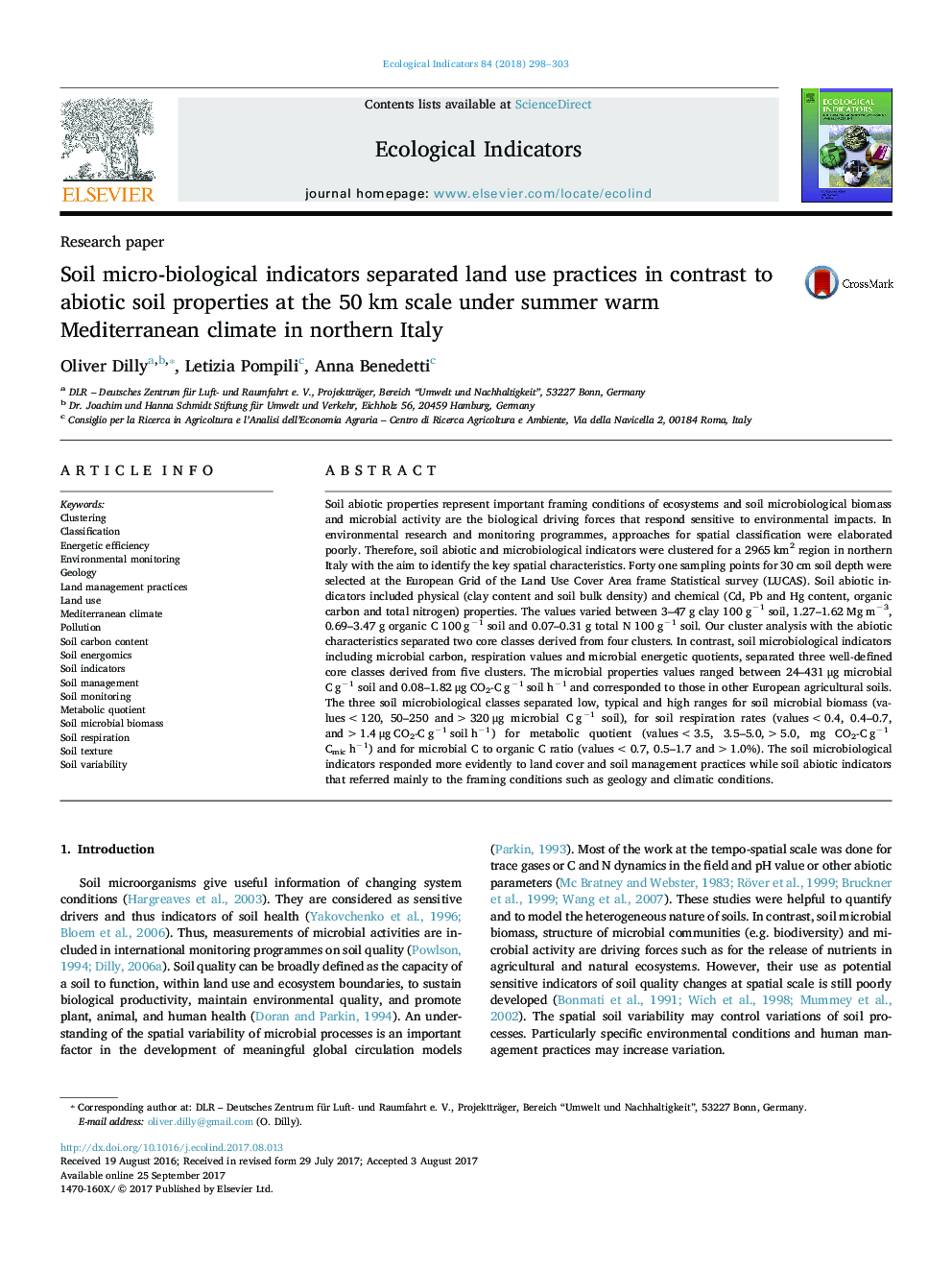| Article ID | Journal | Published Year | Pages | File Type |
|---|---|---|---|---|
| 5741553 | Ecological Indicators | 2018 | 6 Pages |
â¢Soil microbiological carbon-related indicators separated three soil quality classes versus two with soil physical and chemical indicators.â¢Soil abiotic indicators correlated to general, long-term geological settings.â¢Soil microbiological indicators referred to short-term land use practices and environmental impacts.
Soil abiotic properties represent important framing conditions of ecosystems and soil microbiological biomass and microbial activity are the biological driving forces that respond sensitive to environmental impacts. In environmental research and monitoring programmes, approaches for spatial classification were elaborated poorly. Therefore, soil abiotic and microbiological indicators were clustered for a 2965 km2 region in northern Italy with the aim to identify the key spatial characteristics. Forty one sampling points for 30 cm soil depth were selected at the European Grid of the Land Use Cover Area frame Statistical survey (LUCAS). Soil abiotic indicators included physical (clay content and soil bulk density) and chemical (Cd, Pb and Hg content, organic carbon and total nitrogen) properties. The values varied between 3-47 g clay 100 gâ1 soil, 1.27-1.62 Mg mâ3, 0.69-3.47 g organic C 100 gâ1 soil and 0.07-0.31 g total N 100 gâ1 soil. Our cluster analysis with the abiotic characteristics separated two core classes derived from four clusters. In contrast, soil microbiological indicators including microbial carbon, respiration values and microbial energetic quotients, separated three well-defined core classes derived from five clusters. The microbial properties values ranged between 24-431 μg microbial C gâ1 soil and 0.08-1.82 μg CO2-C gâ1 soil hâ1 and corresponded to those in other European agricultural soils. The three soil microbiological classes separated low, typical and high ranges for soil microbial biomass (values <120, 50-250 and >320 μg microbial C gâ1 soil), for soil respiration rates (values <0.4, 0.4-0.7, and >1.4 μg CO2-C gâ1 soil hâ1) for metabolic quotient (values <3.5, 3.5-5.0, >5.0, mg CO2-C gâ1 Cmic hâ1) and for microbial C to organic C ratio (values <0.7, 0.5-1.7 and >1.0%). The soil microbiological indicators responded more evidently to land cover and soil management practices while soil abiotic indicators that referred mainly to the framing conditions such as geology and climatic conditions.
Graphical abstractDownload high-res image (116KB)Download full-size image
